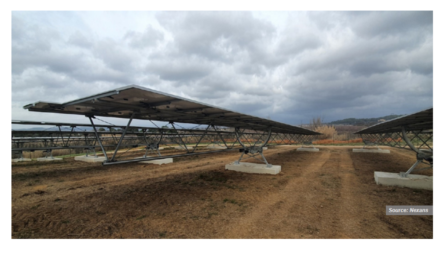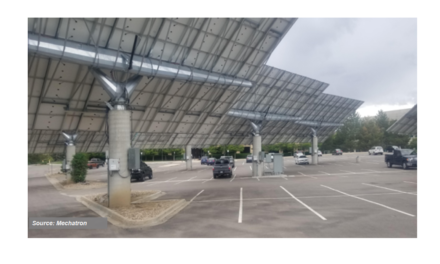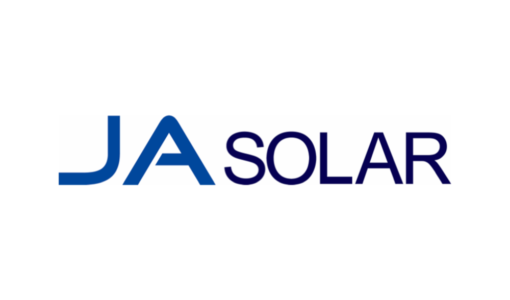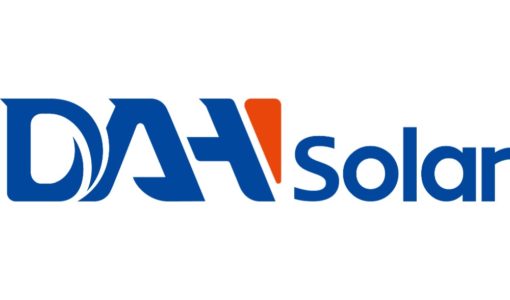- Solar trackers must meet rigorous certification standards, including tests for wear, safety and wind loads
- TaiyangNews market survey on solar trackers lists 46 products, of which most more than half of the models have passed the major 3 standards from IEC and UL
- For utility-scale PV plants, IEC and UL certificates are the minimum requirement but more testing such as wind load testing is requested by EPC’s, independent engineers and lenders technical advisors
Solar PV trackers must withstand harsh weather conditions and at least the mount structure should have an estimated useful lifetime similar to that of PV modules. The most relevant standards for solar trackers are IEC 62817, UL 3703 and UL 2703.
The IEC 62817 international standard defines accelerated wear test procedures for the solar tracker’s key components such as for electronic control units and drive train, and tests for the complete solar tracker. The tests on the complete solar tracker include daily energy and peak power consumption, tracker accuracy characterization, deflection under static load and moment/movement testing under extreme wind loading, stow time, stow energy, and accelerated mechanical cycling procedures.
The drive system has to withstand wind and snow events not only without any damage, but also in a way that the impact of such harsh environmental conditions will not significantly affect the PV plant’s annual energy production. Therefore, drive tests are extensive including torsional stiffness, mechanical drift, drive torque and backlash tests. Additionally, temperature cycles, humidity-freeze cycling and freeze-spray water tests in a climatic chamber as well as temperature cycle tests with dust in a special chamber have to be performed. The main tests for the electronic control unit include IP, IK class, functioning test, UV, damp-heat, thermal cycles, humidity-freeze and robust terminal test. Visual inspection and functional tests are performed initially and are repeated after the performance of climatic and mechanical tests.
The standards UL 3703 and UL 2703 are applicable for solar PV tracker installations in the US. UL 2703 refers to safety of mounting systems including mounting, clamping, retention devices and ground lugs for use with solar panels. UL 3703 includes safety evaluation for all mechanical and electrical aspects including tracker controllers and associated components to mitigate risks of harsh weather conditions, mechanical failure, and electrical shock. Of the 46 products listed in our survey, 40 comply with IEC 62817, 39 with UL 3703 and 15 with UL 2703, while 2, 3 and 2 systems are ongoing with these certifications process, respectively. All systems are certified either according to IEC 62817 or UL 3703, and 24 tracker models have passed all 3 standards.
When it comes to trackers in utility-scale PV plants, IEC and UL certificates build the bottom line from what EPCs, independent engineers and the lender’s technical advisors would like to see. Especially for large investments in case of hundreds of megawatts, wind load testing for the envisaged trackers and project specific modules are mostly required. In such cases, the wind loads have to be applied perpendicular to the solar panels with load distribution being triangular in shape and wind coefficients (pressure and suction) being derived for several inclinations in open and fully blocked tracker positions.
Project financing, obviously, does not rely only on certificates, but on a detailed technical due diligence. At the TaiyangNews Tracker Conference 2021, technical advisory company DNV showed how it evaluates tracker suppliers based on 24 different aspects, such as product certifications, manufacturing process, track record, R&D programs, after-sales services and controller and software features (access DNV presentation here).
The info graph from DNV shows an analysis based on 3 different tracker systems. While the 2 certified systems perform better overall, they are not topping for each criterion. Product quality differs and some aspects are also project specific. Intensive O&M might not be a problem for a project in China or India, but it is crucial in the USA or Europe, where labor cost is much higher.
The text is an excerpt from TaiyangNews 2nd Market Survey on Solar Trackers, which was published in Dec. 2022 and can be downloaded for free here.













